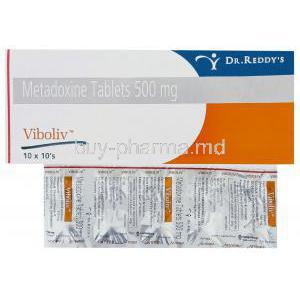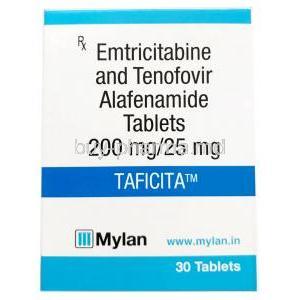Sebivo
- I. Introduction to Sebivo
- II. Composition of Sebivo
- III. How Sebivo Works in the Body
- IV. Uses of Sebivo
- V. Off-Label Use of Sebivo
- VI. Dosage and Administration of Sebivo
- VII. Administration to Special Populations
- VIII. Common Side Effects of Sebivo
- IX. Serious Side Effects and Reactions
- X. Interaction of Sebivo with Other Medications
- XI. Contraindications and Cautions for Sebivo Use
- XII. Important Precautions While Using Sebivo
- XIII. Handling and Storage of Sebivo
- XIV. Overdosage of Sebivo: Risks and Management
I. Introduction to Sebivo
Overview of Sebivo: What It Is and Its Medical Significance
Sebivo, a pharmaceutical advancement, holds a prominent position in the field of treatments for chronic hepatitis B. This antiviral medicine, highly praised for its effectiveness, represents a ray of hope for individuals battling with this persistent viral infection. The importance of Sebivo in the realm lies in its therapeutic benefits and its ability to slow down the progression of liver disease.
Historical Development and Approval for Medical Use
Sebivos origins can be traced back to scientific research and thorough clinical trials. The approval from authorities was a significant breakthrough in hepatitis B treatment. This endorsement was not a bureaucratic procedure but a clear indication of its safety record and solid antiviral effectiveness.
II. Composition of Sebivo
Active Ingredients in Sebivo: A Detailed Analysis
The effectiveness of Sebivo is primarily attributed to its component, which acts as a potent inhibitor of viral reproduction. This carefully designed substance is crucial in how Sebivo works, providing a solid defense against the hepatitis B virus.

Inactive Components and Their Role
Sebivo contains its active ingredient and a combination of inactive components. These substances are not fillers, but they are essential in improving the medicine's stability, how well the body absorbs it, and how easily patients can tolerate them.
III. How Sebivo Works in the Body
Mechanism of Action: Understanding Sebivo’s Therapeutic Effects
Sebivo works by blocking the DNA synthesis, which is a crucial step in the life cycle of the hepatitis B virus. It hinders the replication machinery of the virus.
Comparison with Other Similar Medications
IV. Uses of Sebivo
Primary Indications: Treating Specific Health Conditions
Sebivo is a brand name for telbivudine, an antiviral medication used to treat chronic hepatitis B infection in adult patients with compensated liver disease and evidence of viral replication, persistently elevated serum alanine aminotransferase (ALT) levels, and histological evidence of active inflammation, and/or fibrosis 1. It works by stopping the hepatitis B virus from reproducing 2.
References
2: Telbivudine: Uses, Interactions, Mechanism of Action | DrugBank Online 1: Sebivo | European Medicines Agency
V. Off-Label Use of Sebivo
Defining Off-Label Use: When and Why It Happens
Sebivo has been used off-label to treat other medical conditions, such as:
- Pediatric Thrombocytopenia: Even though it doesn’t have FDA approval for this use, Sebivo may be used to manage thrombocytopenia in pediatric patients offering potential benefits 3.
- Myelodysplastic Syndrome: Sebivo’s off-label use extends to myelodysplastic syndrome, a disorder affecting the bone marrow. In this context, it may help improve blood cell production 3.
- Chemotherapy Induced Thrombocytopenia: Sebivo can play a role in managing thrombocytopenia that occurs as a side effect of chemotherapy. This can be beneficial for cancer patients undergoing treatment 3.
- Autoimmune Disorders: The immunomodulatory properties of Sebivo make it a potential option for addressing autoimmune disorders 3.
Please find the following HTML links to the references for the above content:
2: Telbivudine: Uses, Interactions, Mechanism of Action | DrugBank Online 3: Sebivo: Uses, Dosage, Side Effects, FAQ - MedicinesFAQ 1: Sebivo | European Medicines Agency.
Common Off-Label Uses of Sebivo and Associated Research
Sebivo has been found to have some off-label uses, particularly for certain co-infections. Early research suggests that there may be benefits to using it beyond its conventional applications.
VI. Dosage and Administration of Sebivo
Recommended Dosage: Guidelines and Variations
The appropriate amount of Sebivo to take depends on factors specific to each patient. Following these guidelines will help ensure the medication works effectively while reducing the chances of experiencing side effects.
Methods of Administration: Best Practices
Sebivos administration has an approach. Achieving the results depends on following these established methods, prioritizing effectiveness and patient well-being.
Adjusting Dosage for Specific Populations
It is essential to change the dosage in specific situations, like when dealing with patients with kidney problems. Customizing the dosage in these cases is essential for ensuring safety and achieving the desired results.
VII. Administration to Special Populations
Sebivo for the Elderly: Special Considerations and Guidelines
In patients, it is essential to use Sebivo with caution. The physiological changes that come with aging require adjustments in dosage and close monitoring to ensure that the treatment is effective and safe.

Use in Pregnant Women and Nursing Mothers: Risks and Recommendations
Regarding women and nursing mothers, the use of Sebivo is approached with great caution. It's essential to consider the potential advantages and potential risks involved in these vulnerable groups.
Pediatric Use: Safety and Dosage in Children
The use of Sebivo in children needs to be managed. The dosage and administration for patients follow strict guidelines prioritizing their safety and therapeutic effectiveness.
VIII. Common Side Effects of Sebivo
Identifying Common Adverse Reactions: What to Expect
- Some individuals may experience issues like feeling queasy or having loose stools.
- There might also be a slight increase in certain liver enzymes.
Managing and Mitigating Common Side Effects
Managing these side effects effectively requires an approach. This involves addressing symptoms, adjusting dosage if necessary, and, in situations considering discontinuation of the treatment.
IX. Serious Side Effects and Reactions
Recognizing Severe Adverse Effects: When to Seek Medical Attention
Sebivo can have side effects, although they are uncommon. If you experience abdominal pain, notice significant changes in your liver function test results, or have severe skin reactions, it's essential to seek medical attention right away. Stay alert and promptly inform your healthcare provider if you notice any symptoms.
Long-Term Risks and Rare Side Effects
Long-term use of Sebivo may pose risks such as damage to the kidneys and the development of lactic acidosis. Although these side effects are uncommon, they highlight the significance of monitoring and careful attention from healthcare professionals throughout the treatment process with Sebivo.
X. Interaction of Sebivo with Other Medications
Common Drug Interactions: What to Avoid
- Using Sebivo with medications that strongly inhibit renal clearance should be avoided.
- It is also essential to steer off certain antiretrovirals that have adverse interactions with Sebivo.

Understanding the Impact of Sebivo on Other Treatments
The effectiveness and safety of Sebivo can be significantly affected by medications, which may change how well it works and its potential risks. It is essential to have an understanding of these interactions to ensure the best treatment results and reduce any potential harm.
XI. Contraindications and Cautions for Sebivo Use
Conditions and Factors Contradicting Sebivo Use
Sebivo should not be used in patients who have had reactions to its ingredients, those with severe liver problems, or those with kidney dysfunction. It is essential to be aware of these restrictions to avoid any effects on patient health.
Cautions for Patients with Specific Health Conditions
Patients who have existing health conditions like HIV infection or are undergoing dialysis should be careful when using Sebivo. It may be necessary to customize treatment plans and adjust the dosage, in these situations.
XII. Important Precautions While Using Sebivo
General Safety Measures and Precautions
To reduce the risks linked to Sebivo, patients should take their prescribed doses as instructed by their healthcare provider and follow the recommended follow-up appointments. It is also recommended to refrain from consuming alcohol and promptly inform healthcare professionals of any symptoms that may arise.
Monitoring and Follow-Up Recommendations
Regularly monitoring liver function tests, renal function, and viral load is recommended when undergoing Sebivo therapy. These regular assessments play a role in identifying any potential complications at an early stage.
XIII. Handling and Storage of Sebivo
Proper Storage Conditions to Maintain Efficacy
It is essential to store Sebivo in a dry location away from direct sunlight and moisture. Proper storage plays a role in maintaining its effectiveness and prolonging its shelf life.
Handling Precautions for Safety
When dealing with Sebivo it is crucial to maintain cleanliness and follow hygiene procedures. It is essential that patients and caregivers receive education regarding handling techniques to mitigate the risk of unintended exposure.
XIV. Overdosage of Sebivo: Risks and Management
Symptoms of Overdosage and Immediate Actions
If someone takes much Sebivo, they may experience symptoms like feeling sick, throwing up, and tired. In these situations, it's essential to seek medical help and focus on managing the symptoms through supportive treatment.
Long-Term Management and Prevention of Overdosage
To prevent overdosing on Sebivo, it is vital to follow the prescribed dosages and educate patients about the dangers of self-medication. Long-term management involves monitoring patients and counseling them to ensure they follow the recommended treatment plan.
















